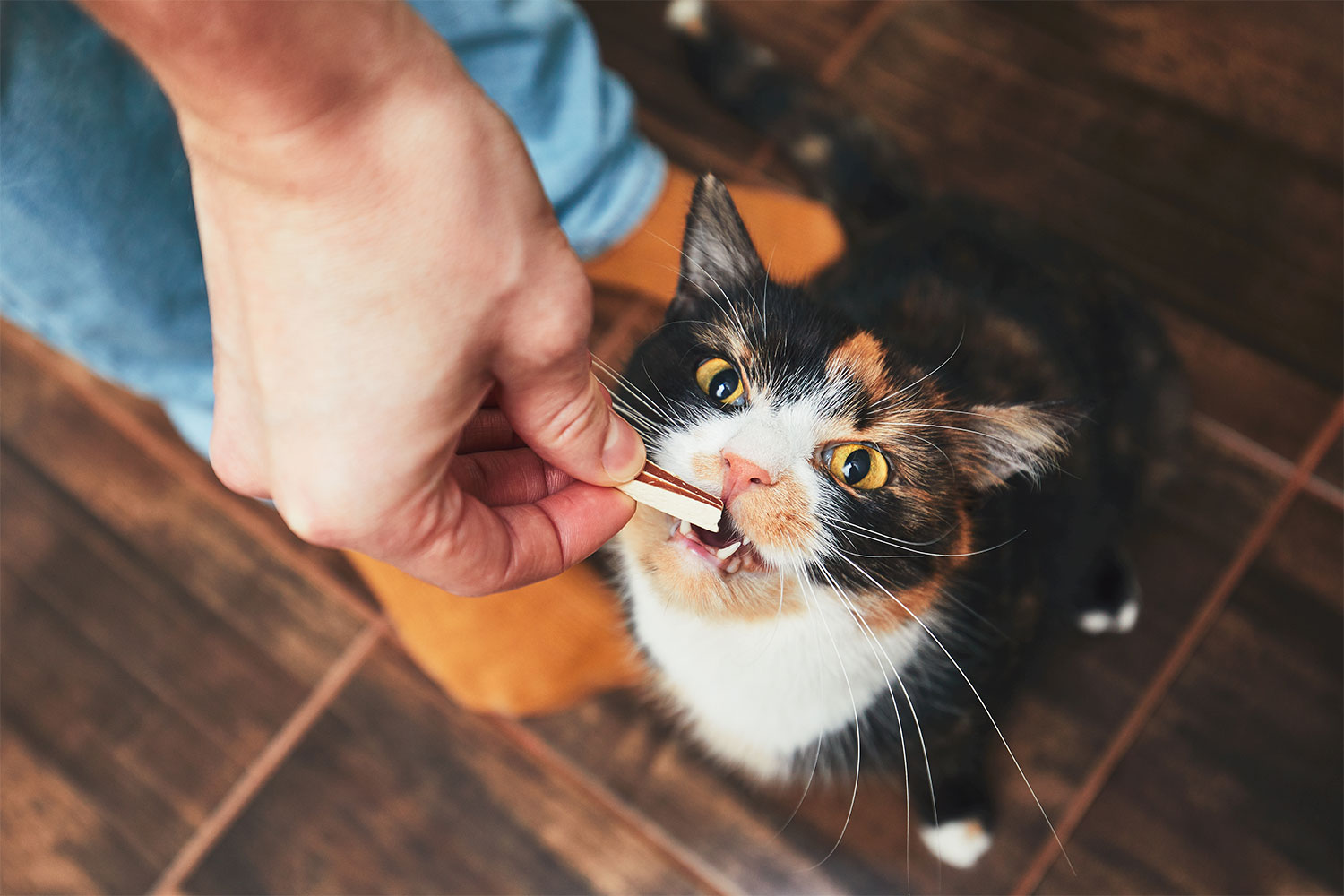Cats aren’t known for being people-pleasers, and that’s why there are so many resources for dog owners to train but not cat owners. Cats tend to get the run of the house, and people consider training them as a desperate last resort.
In reality, cats are trainable. You can’t approach them quite the same way you would dogs, but you can train a cat to perform something positive or stop doing something negative. Treats should be the primary motivation for your training. Here’s what you need to know.

Using cat training treats correctly
Before we get into all the mistakes we make trying to train a cat, let’s go over the basics of using treats the right way for tricks or behavior issues.
- Use the right size — Training treats must be in small bites, not only because your cat’s mouth is small but because you don’t want to ruin your cat’s appetite too quickly.
- Use your cat’s own food — If your cat tends to scoff at the food you feed, turn that into a learning experience. Feed your kitty in small bites throughout the day as you train it.
- Only premium treats will do — Only offer premium treats when you are trying to train your cat so that your cat stays interested.
- Don’t leave your cat’s food out — Your cat is more likely to perform for a treat if they know their regular food reserve isn’t waiting for them.
Using the treats to train
Cats may not show the same outward signs of attention that our dogs do, but don’t worry. Your cat is still paying attention and still trainable.
Use the treat to lure your cat out of whatever spot it’s in and reward the cat simply for coming to explore.
Begin to reward your cat for performing a behavior such as coming when you call its name. Don’t follow your cat around or allow your cat to change your location.
As your cat consistently performs the behavior, try the training in different rooms and under different circumstances.
See if you can change out a cue word such as “Kitty come” instead of solely the treat. This step may take some patience, and it’s a good idea to offer the treat periodically for as long as you want the behavior to continue.
Try to get your cat to perform the behavior more than once in succession.
Cats may require a little more patience when training, but the important thing to remember is consistency. Even though your cat may not be as outwardly eager to please, it’s essential to keep at it.

Common obstacles and misunderstandings
Some training problems cat owners have stem from a misunderstanding of cat behavior. While your cat may love you as a human companion, cat personalities are very different from dogs.
My cat has no attention span
Cats have plenty of attention span. They can wait for a long time for prey or watching potential prey out of a window. The perceived loss of attention when training has more to do with manipulation.
Cats know if their attention seems to wander you’re more likely to chase them rather than the other way around. When this happens, make it clear that the food and reward go away if they aren’t paying attention. You should see an increase in concentration after that.
My cat looks bored
When cats look bored, this could be a sign that your cat doesn’t understand what you are trying to accomplish. Try breaking down the trick or behavior into more simple steps and reinforce them along the way.
You might also consider alternatives to training to alleviate negative behaviors. Move your litter box to a different location. Try a different material for your scratching post. Move your plants out of the way. Sometimes, it’s a matter of adjustment rather than training.
Boredom can also be a sign that your cat isn’t hungry for the treat. Try putting food up soon after you give it so your cat doesn’t graze all day, and switch to a more premium treat. Your cat may suddenly develop an interest in the trick with those adjustments.
Training your cat
Training treats can be a huge boon to your training efforts. Be sure you invest time in picking out healthy cat treats in small enough sizes that you won’t ruin your cat’s appetite. Consider using your cat’s food if that’s appropriate.
Training your cat requires patience and consistency. Your cat may not seem as eager to learn a new behavior as your dog, but with time you can train your cat to perform a variety of actions that may have seemed impossible at the start.
Use this time to build a bond with your cat and provide enrichment for your cat’s natural curiosity. With a premium, healthy cat treat, your goals could be closer than you think.


